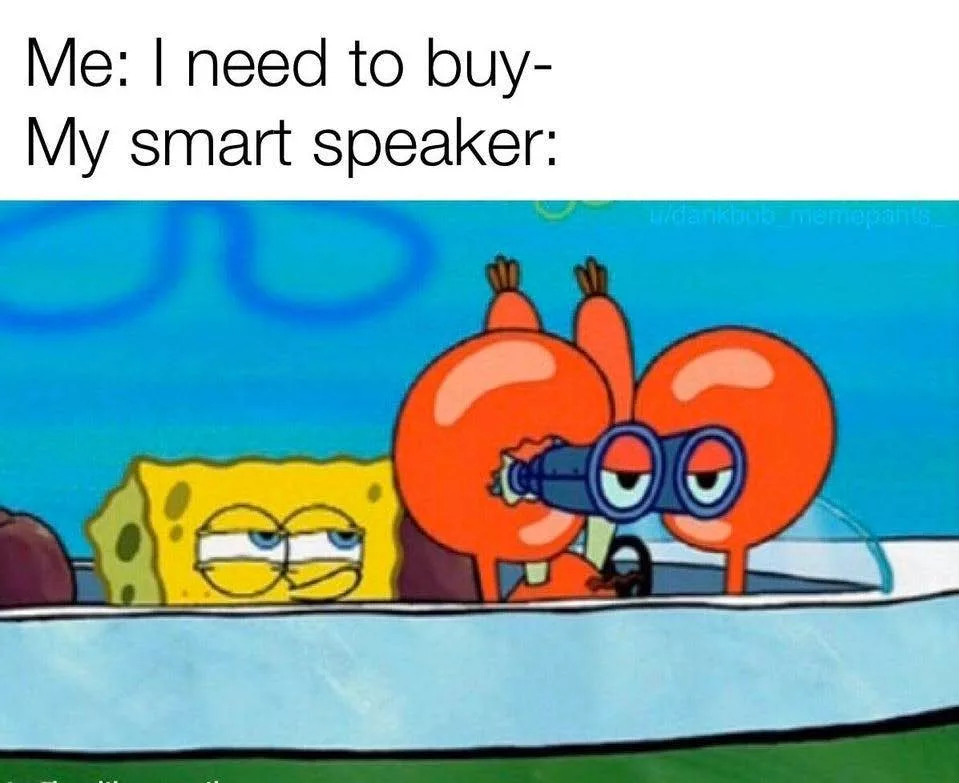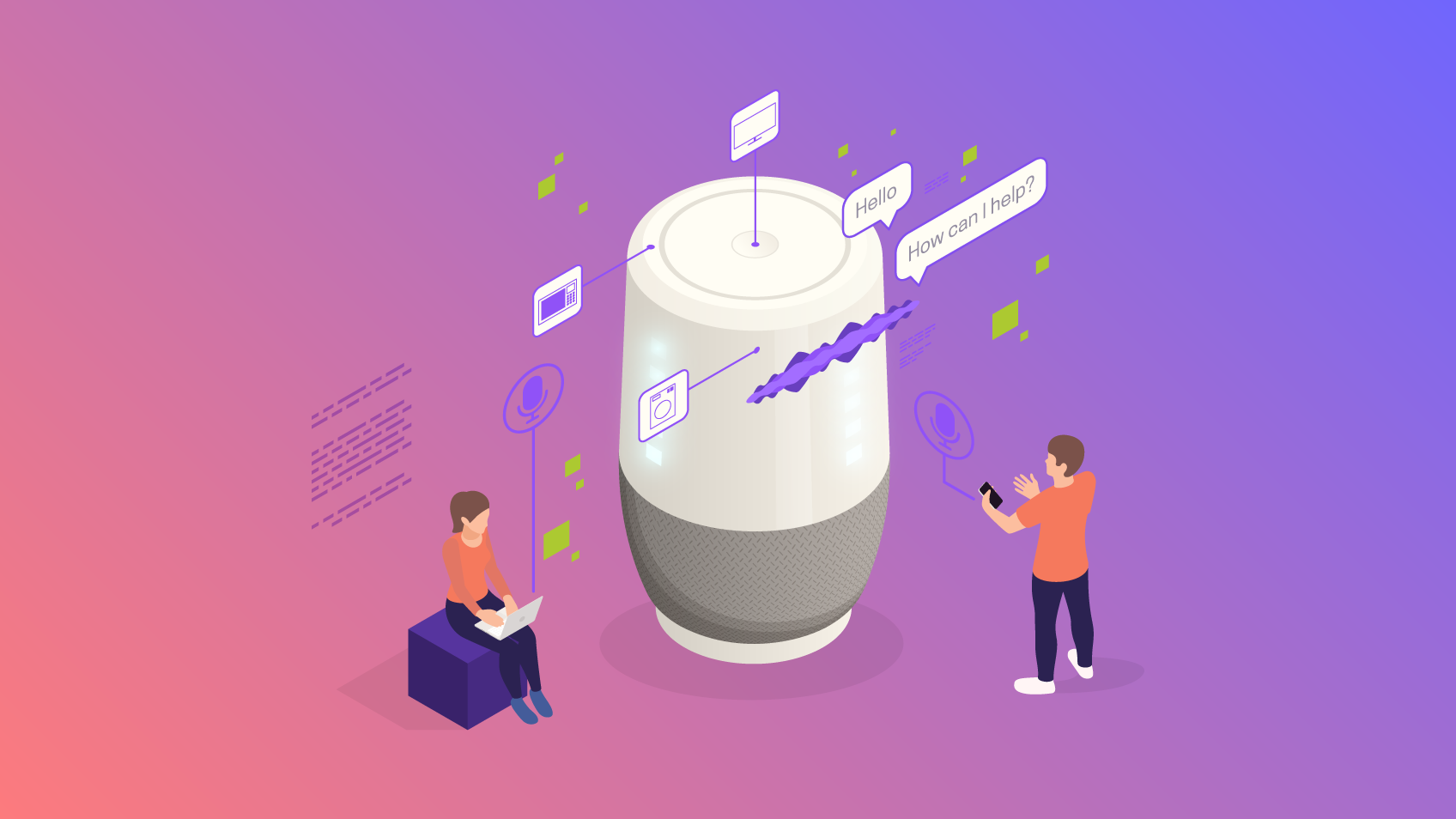5 SECONDS SUMMARY:
- Voice user interfaces came to revolutionise the world of interactions;
- Discover all the benefits, challenges and the future of User Experience.
Voice User Interfaces (VUIs) have been around for some time, and it wasn’t until the rise of smart speakers like Amazon’s Alexa and Google Home that they became mainstream.

Think with Google – Google/Peerless Insights, “Voice-Activated Speakers: People’s Lives Are Changing,” n=1,642, U.S. monthly active voice-activated speaker owners
Voice User Interfaces (VUIs) are those cool tech things that let you interact with technology by speaking. Rather than typing or tapping, you can just say what you want, and the machine will understand you.
Essentially, it’s like having a conversation with another person, but it’s actually a machine that uses Natural Language Processing (NLP) to figure out what you want it to do.
Today, VUIs are used in various applications, from home automation and entertainment to customer service and healthcare.
But how do you build one that people can actually converse with?
4 benefits of voice user interfaces
The best part about VUIs is that you don’t need to be tech-savvy to use one.
VUIs offer several benefits over traditional GUIs (Graphical User Interfaces). Here are some of the major ones:
- Better accessibility: VUIs can improve accessibility for individuals with disabilities or those who are visually impaired, as well as the less technically proficient.
- More intuitive and natural: VUIs can be designed to use natural language and conversational flow, making them more intuitive and user-friendly. This can make interactions feel more human-like and less like a machine interface, allowing users to speak in their natural language.
- Hands-free interaction: VUIs allow users to interact with devices without needing physical input devices such as keyboards, mice or touchscreens. This can be especially beneficial while multitasking.
- Faster and more efficient interactions: VUIs can reduce the time it takes to complete tasks by allowing users to perform actions through voice commands.
This can lead to increased efficiency, productivity and reduce user fatigue.

Challenges of voice user interfaces
As with all endeavours, challenges are inevitable. By overcoming these obstacles, we can improve how VUIs behave and evolve their integration into our daily lives.
Here are some of the biggest challenges offered by VUIs:
- Privacy concerns: They are always listening and can raise privacy concerns among users, particularly with regard to data collection and storage.
- Noise interference: Background noise and interference can affect the interaction, making it difficult for the device to interpret user input accurately.
- Limited functionality: Some actions or tasks that are possible with Graphical User Interfaces will be harder to perform, particularly those that require complex visual interactions.

The designer’s role
At its heart, designing a VUI is not that different from designing a GUI (Graphical User Interface) or any other product.
To be able to create great user experiences with voice interactions, we need to understand how people naturally communicate with their voices. We can break the process of designing VUIs into simple steps, similar to any other UX process:
1. Understand the User’s Needs and Expectations: Designers must understand the target audience’s expectations and the context in which the interface will be used.
2. Use Natural Language: Use natural language that considers the audience’s terminology and language.
3. Design for Conversational Flow: Create a conversational flow that feels natural and intuitive for users by focusing on the order of questions and responses, tone, pacing, and guiding users through the conversation to get the desired information or service. Also, consider
designing for errors.
4. Provide Feedback and Confirmation: Provide spoken or visual feedback and confirmation to help users understand the information provided and their actions, especially given the
lack of visual cues.
5. Test and Iterate: Test the voice interface with users to identify issues or areas for improvement.
Based on user feedback, iterate on the design to create a more user-friendly and effective conversational AI.
The future of user experience
VUIs have already transformed how we interact with technology, but their full potential has yet to be realised. As technology continues to improve, it will become more accurate and reliable, making it more useful in healthcare, education, and customer service. In addition, VUIs can be integrated with other technologies like Artificial Intelligence (AI) to provide more personalised experiences and improve their accuracy.
This technology will eventually become an integral part of our daily lives, providing a more natural and intuitive way to interact with the technological world around us.
Here are some potential trends that may shape the future of VUIs and user experience:
1. Personalisation: As VUIs become more sophisticated, they will be better able to personalise the user experience by understanding individual preferences and behaviours. This could include tailored responses and recommendations, making the interaction more human-like and intuitive.
2. Multimodal interfaces: VUIs are already integrated with graphical user interfaces to create multimodal interfaces that combine voice, touch, and other inputs. This will enhance the user experience by providing more ways to interact with technology and allowing for greater flexibility and customisation.
3. Emotional intelligence: VUIs may better understand and respond to human emotions, creating a more empathetic user experience. This could include using natural language processing to detect sentiment and adjust responses accordingly.
4. Augmented reality: VUIs could be integrated with augmented reality technology to create more immersive and engaging user experiences. This could include using voice commands to interact with virtual objects or environments and enhancing the user experience in various applications.
5. Integration with IoT: As the Internet of Things (IoT) expands, VUIs could become a key way for users to interact with connected devices and appliances. This could include controlling smart home devices, accessing information from connected sensors, and more.
Overall, the future of user experience and VUIs is bright. As VUI technology continues to evolve, designers and developers will need to stay up-to-date with these trends and adapt to new ways of designing and building VUIs that meet the needs and expectations of users.
At Xpand IT, we are well-equipped to help your business design and develop products that deliver exceptional experiences, focusing on a strategic partnership between ourselves and your clients.
Want to embrace a new challenge and elevate your product? Give us a call, and let’s have a chat.











